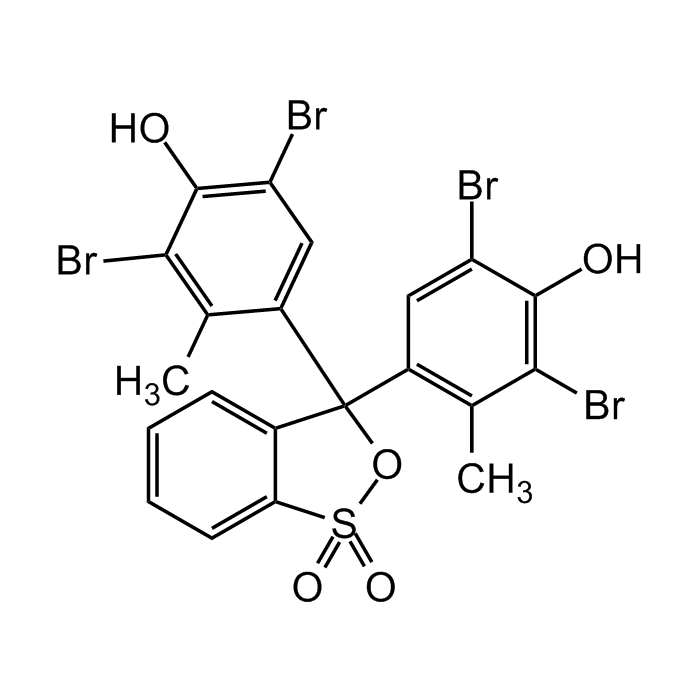Cookie Policy: This site uses cookies to improve your experience. You can find out more about our use of cookies in our Privacy Policy. By continuing to browse this site you agree to our use of cookies.
Chemodex
Bromocresol Green

| Product Details | |
|---|---|
| Synonyms | 3',3",5',5"-Tetrabromo-m-cresolsulfonephthalein; NSC 7817; BCG |
| Product Type | Chemical |
| Properties | |
| Formula |
C21H14Br4O5S |
| MW | 698.01 |
| CAS | 76-60-8 |
| RTECS | SJ7456000 |
| Purity Chemicals | ≥95% (Dye content) |
| Appearance | Beige to yellow-brown powder. |
| Solubility | Soluble in ethanol (30mg/ml). |
| Declaration | Manufactured by Chemodex. |
| Other Product Data |
Click here for Original Manufacturer Product Datasheet |
| InChi Key | FRPHFZCDPYBUAU-UHFFFAOYSA-N |
| Smiles | O=S1(C2=CC=CC=C2C(C3=CC(Br)=C(O)C(Br)=C3C)(C4=C(C)C(Br)=C(O)C(Br)=C4)O1)=O |
| Shipping and Handling | |
| Shipping | AMBIENT |
| Short Term Storage | +20°C |
| Long Term Storage | +20°C |
| Handling Advice | Protect from light and moisture. |
| Use/Stability | Stable for at least 2 years after receipt when stored at RT. |
| Documents | |
| Product Specification Sheet | |
| Datasheet |
 Download PDF Download PDF |
Bromocresol green (BCG) is a pH sensitive triphenylmethane dye useful in a variety of colorimetric detection technologies. BCG is used as a tracking dye for DNA agarose gel electrophoresis, in protein determinations and in charge-transfer complexation processes. In TLC BCG is used for visualization of the compounds with functional groups whose pKa is below 5.0. One major use is to measure serum albumin concentration within mammalian blood samples in possible cases of kidney failure and liver disease. In aqueous solution, bromocresol green will ionize to give the monoanionic form (yellow), that further deprotonates at higher pH to give the dianionic form (blue). Visual transition interval: pH 3.8 (yellow) - 5.4 (blue). UV-Visible (λmax): 423 nm, 444 nm, 617 nm. Bromocresol green is also an inhibitor of prostaglandin uptake that blocks the immediate rise in intracellular immunoreactive PGE2 following treatment with 16,16-dimethyl-PGE2. Bromocresol green prevents the stimulatory effect of 16,16-dimethyl-PGE on cell proliferation, adhesion, migration and invasion and on HIF-1α expression and activity. Additional applications include use in sol-gel matrices and the detection of ammonia.
(1) P.G. Hill; Ann. Clin. Biochem. 22, 565 (1985) | (2) F.R. Zaggout; J. Disp. Sci. Technol. 26, 757 (2005) | (3) R.W. Sabnis; Handbook of Acid-Base Indicators (2008) | (4) A. Madrigal-Martinez, et al.; Int. J. Biochem. Cell Biol. 59, 52 (2015)





